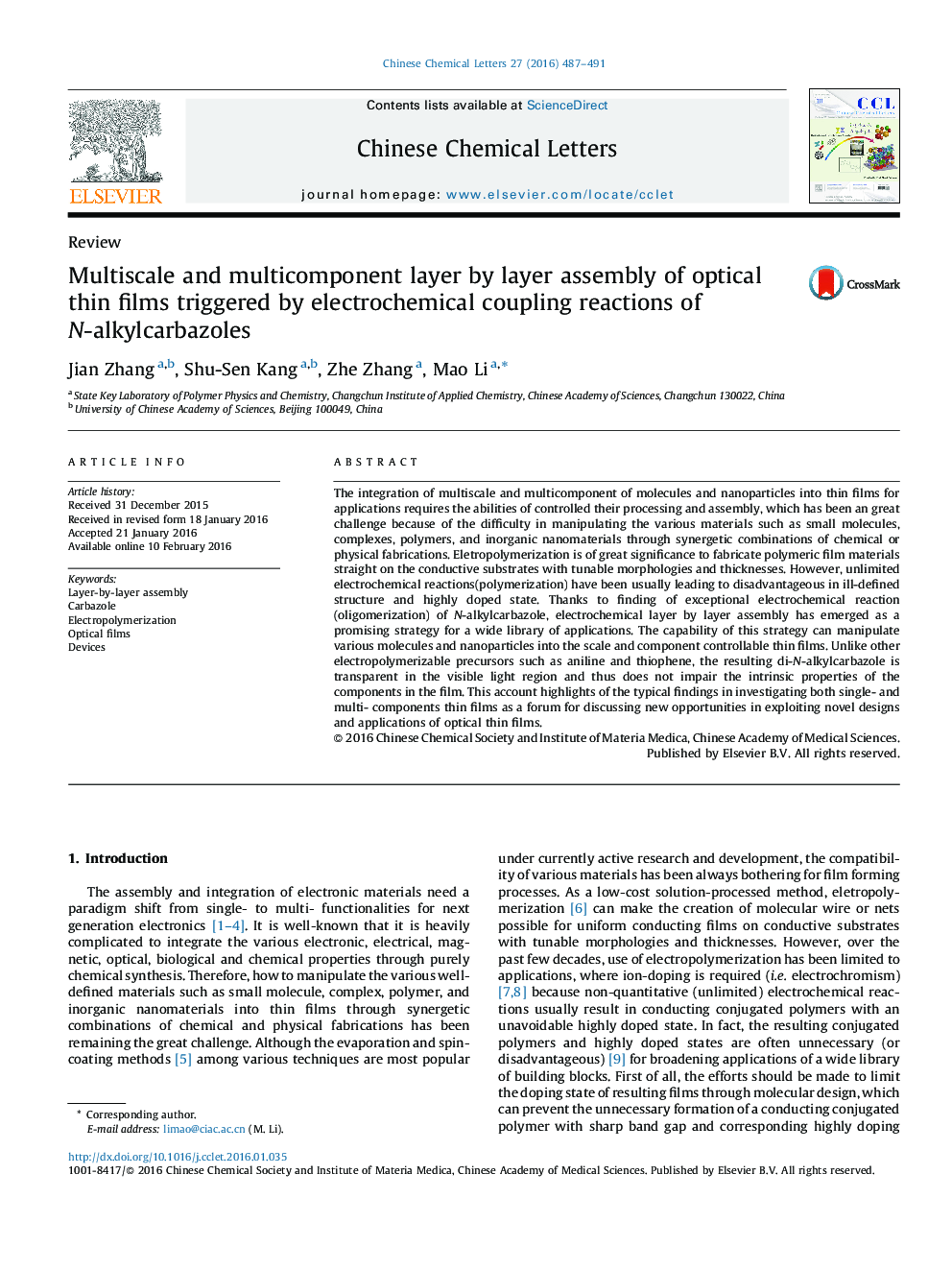| Article ID | Journal | Published Year | Pages | File Type |
|---|---|---|---|---|
| 1256900 | Chinese Chemical Letters | 2016 | 5 Pages |
The integration of multiscale and multicomponent of molecules and nanoparticles into thin films for applications requires the abilities of controlled their processing and assembly, which has been an great challenge because of the difficulty in manipulating the various materials such as small molecules, complexes, polymers, and inorganic nanomaterials through synergetic combinations of chemical or physical fabrications. Eletropolymerization is of great significance to fabricate polymeric film materials straight on the conductive substrates with tunable morphologies and thicknesses. However, unlimited electrochemical reactions(polymerization) have been usually leading to disadvantageous in ill-defined structure and highly doped state. Thanks to finding of exceptional electrochemical reaction (oligomerization) of N-alkylcarbazole, electrochemical layer by layer assembly has emerged as a promising strategy for a wide library of applications. The capability of this strategy can manipulate various molecules and nanoparticles into the scale and component controllable thin films. Unlike other electropolymerizable precursors such as aniline and thiophene, the resulting di-N-alkylcarbazole is transparent in the visible light region and thus does not impair the intrinsic properties of the components in the film. This account highlights of the typical findings in investigating both single- and multi- components thin films as a forum for discussing new opportunities in exploiting novel designs and applications of optical thin films.
Graphical abstractElectrochemically layer by layer assembly triggered by coupling reaction of N-alkylcarbazole was reviewed as a highly robust and versatile strategy to manipulate the small molecule, complex, polymer and nanoparticle into homo-, periodic hetero- and gradient hybrid- thin films on patterning 2D and 3D surface platforms with a high degree of controllable abilities in predictable structure, morphology and thickness.Figure optionsDownload full-size imageDownload as PowerPoint slide
